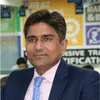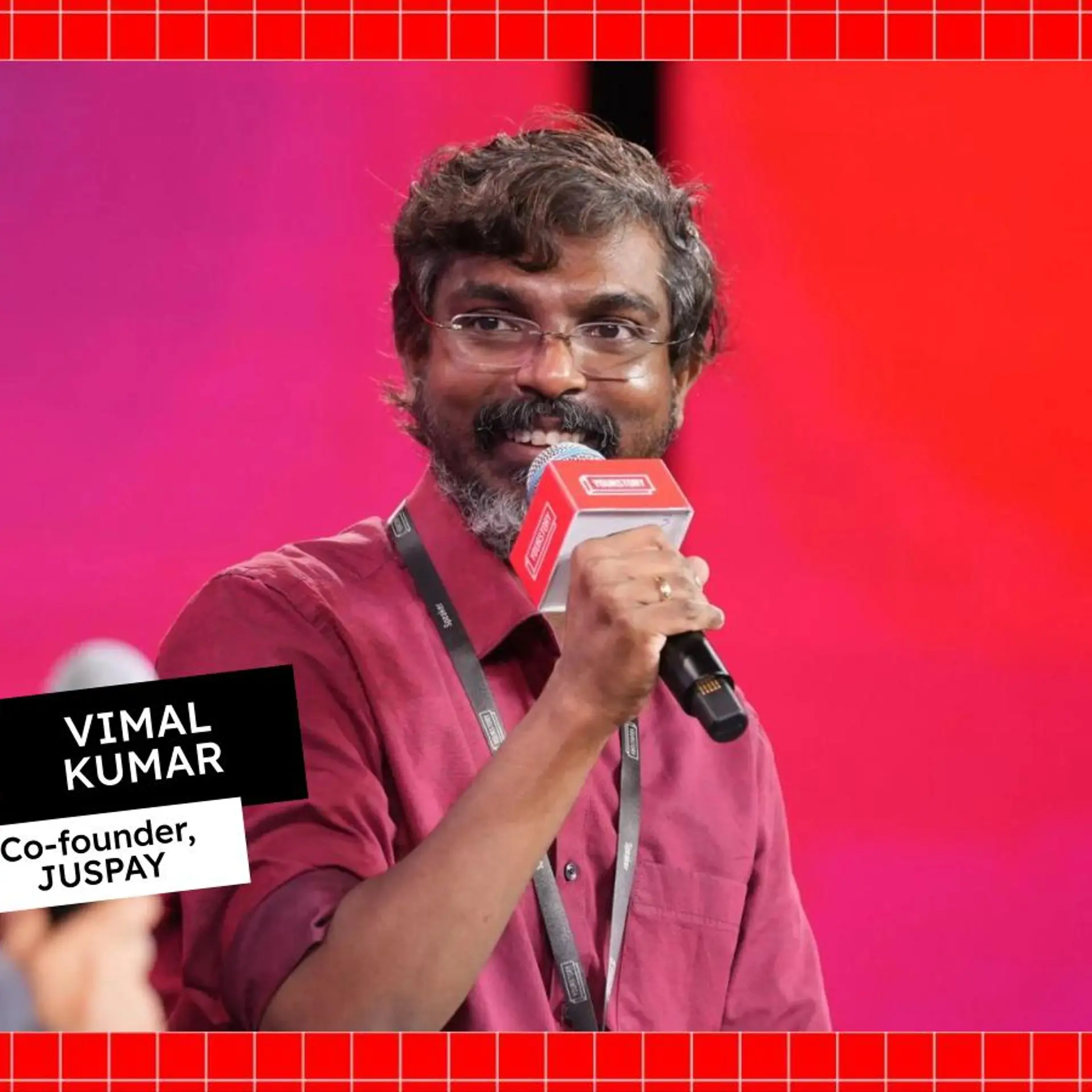[DesignUp 2021] ‘Designers inspire lives, create magic, and give hope’ – Nandita Abraham, GUS Global Services
As media partner for this design conference and fundraising event, YourStory presents this interview on industry-academia collaboration, and the inspiring role of designers.
Nandita Abraham is Chief Partnership Officer, GUS Global Services. Prior to this she was the President of Pearl Academy. She has extensive experience in industry-academia partnerships, across India, Hong Kong, and the US.
She is an active member of the FICCI Higher Education Committee, and the CII National Committee on Design. She has played a leading role on the executive committee of IFFTI (International Foundation of Fashion Technology Institutes). She has given lectures in the US and UK as well, and will be speaking at DesignUp 2021 this month.
This year, the DesignUp 2021 conference team’s response to India’s apocalyptic second wave of the COVID-19 pandemic is to organise a virtual fundraising drive along with the stellar lineup of speakers. To be held on the weekends of June 11-20, 100 percent of donations will go to charities bringing much-needed relief to rural India, in the form of dry rations, oxygen concentrators, and health centre wards.
As media partner for the conference series, see YourStory’s coverage of DesignUp’s earlier online panels in 2020, May the Fourth be with you and The pandemic’s impact on design. See also our write-ups on the annual DesignUp conference editions from 2019, 2018 and 2017, and our d-Zen (‘Design Zen’) section for more design resources.

Nandita Abraham joins us in this interview on resilience during the pandemic, academia-industry collaboration for education, and opportunities for designers and entrepreneurs.
Edited excerpts of the interview below:
[YS]: What are some outstanding examples you have seen of effective design during the pandemic?
Nandita Abraham [NA]: Individuals, communities and companies organised themselves towards a common goal – helping people.
An example close to home is the We Care Initiatives by GGS, Pearl Academy and UPES. We had online engagement activities, free counselling, and medical task forces set up in five cities in India (Delhi, Dehradun, Mumbai, Bengaluru, Jaipur). They worked locally at getting hospital beds, oxygen cylinders, concentrators, and even vaccinations.
Each task force was made up of employees, a medical professional, and students who verified leads. In three cities, there were ambulances deployed along with oxygen and medicines. Many near-crisis situations were averted. People came out to support the system and hospital beds were even obtained as far as Karnal and Amritsar to support families.
Another example is the organising of all conferences and events online – though some were exhausting and extremely boring, others innovated and designed the experience to make it meaningful. Some better and notable ones that I attended were Adobe Max for a week; The Republic of Letters: Groundbreak 2020 by Ashoka and Harappa Education; and a five-day Unified Mindfulness retreat for people from around the world.
This DesignUp For A Cause is a great example of an online event and fundraiser as well.
[YS]: What are the key challenges facing designers in these grim times, and how can they be overcome?
[NA]:
- Gaining real insights without actually observing and being with their users
- Making connections with people at networking events, conferences, meetings, and so on. These were opportunities for designers and industry to understand each other, collaborate and create multidisciplinary opportunities
- The overwhelming takeover of all projects by tech. People with a more physical approach and who work with physicality have had a lot of adjusting to do.
Some of these can be overcome with a little bit of design thinking and innovation. Research is taking on a new meaning and people are innovating. Questioning is becoming more exploratory. Listening has become a very important skill.
Micro collaborations between individuals are booming, and young people are working with each other online. Tech will retain its importance, but the importance of touch, feel, and handmade will grow again once the pandemic wanes.
People will need to get out of their silos more and work as multi-disciplinary designers. Industries will go through ups and downs, but designers can be agile and work with multiple industries.

[YS]: What are three core skillsets or mindsets that designers need in the uncertain post-pandemic world?
[NA]: Speculation and agility are key – designers should be able to speculate on the future and be agile enough to prepare and adjust to it.
Designers need to be multi-disciplinary, and have the ability to immerse in problems and work with people from different domains.
Finally, positivity is important – having a deep conviction that problems can be solved and we can have impact.
[YS]: What are some notable projects or research initiatives you are currently engaged in?
[NA]: I am working on number of projects, such as a conference for IFFTI hosted by Pearl Academy. The theme is Fashioning Resurgence and it has researchers and academics from around the world discussing three areas – the urgent, the emergent, and the incumbent
Social Internships: UPES Dehradun has an excellent initiative called School for Life, where they are equipping students to live meaningful lives. One part of this project that I am involved with is supporting around three thousand students to do a social internship this summer. It is a huge experiment and will make a big difference to the lives of these students and the NGOs they work with.
I am also working as a part of a core group at Association of Designers of India (ADI) that is looking at design education: why we are, where we are, where we need to be, and how we can get there. There is strength in us being together and I am positive about the outcomes.
[YS]: What are the success factors for good designers to become good design managers?
[NA]:
- Understanding how to work with people from different backgrounds, who have a different language and think differently.
- Understanding business, structure and processes and the need to build and scale.
- Flexibility of thought and openness to ideas.

[YS]: What are three daily habits of yours that you think help in strengthening your design sensibilities?
[NA]:
a. Underdetermination: I always feel like I can learn from a situation. That there may be another solution, more evidence, and a different point of view that could work. I feel this helps me immensely.
b. Mindfulness in action: I try to focus on what I am doing during the day. This helps me to observe more, experience more, and accept more
c. Exercise: Keeping my body fit helps me keep my mind alert and fit.
[YS]: Many entrepreneurs with a tech/business background tend to under-estimate the importance of design. What advice would you give founders on when and how to engage with designers?
[NA]: In my opinion, if you want something to be done properly, it MUST be designed. Startup founders should remember that whether their idea is a product or a service, it is for a user, for a community, and for a purpose.
Quick hacks to go to market will never be as good as something that has followed a product design process. Engage with a design consultant from the start – or better still, get one on board. Too many tech founders do design themselves and struggle later.

[YS]: What are ways in which industry and academia can collaborate to improve design education? What is your involvement in this space?
[NA]: Industry can play a HUGE role in design education – as a partner in ideation, development, and research. Industry and educators have to add value to each other.
Faculty in design colleges have to be up to speed so that they too can contribute to the industry. I have worked a lot in this area. Here are some areas I’ve been active in where Pearl Academy and UPES integrate with industry – the potential is huge!
Industry helps in contributing to curriculum with an approach of cocreate, codeliver and cocertify. Industry serves on advisory boards and mentoring teams, and are involved in faculty hiring, referrals, interviews.
I have been active in bringing industry into live classroom projects for students and faculty, masterclasses, joint research, and internship programmes. Industry have also served on juries for exhibitions and competitions, and assessed digital platforms and trials.
Through all these ways, design educators and industry are able to really set up close relationships that will bring out the best in students.
A great example is Vibram, a sole company that makes the five-toed shoe. They have started Vibram University, and Pearl Academy did a project last year led by Italian and Japanese designers on innovation of the Vibram shoe.
Other companies like Fab India, Woolmark, and Good Earth also work with students and prioritise design education as an area for collaboration and innovation

[YS]: What are your tips or parting words of advice for aspiring designers in our audience?
[NA]: Design is a serious career, perhaps as important as a doctor and definitely as an engineer. You can play a role in saving lives, in creating a safe environment, in designing systems for less accidents, and in disease management.
You can also inspire lives, create magic, bring happiness, and make lives better. Design solves problems and gives hope – so don’t forget what all you can do.
Be positive. Think big. Work hard and respect the world around you.
Edited by Teja Lele


![[DesignUp 2021] ‘Designers inspire lives, create magic, and give hope’ – Nandita Abraham, GUS Global Services](https://images.yourstory.com/cs/2/28b451402d6a11e9aa979329348d4c3e/DUn2-1623383804165.png?mode=crop&crop=faces&ar=2%3A1&format=auto&w=1920&q=75)


![[COVID Warriors] How Mercy Mission brought a group of NGOs together to provide food, ration, beds, oxygen, and dignity in death amid the pandemic](https://images.yourstory.com/cs/5/98c65090592f11ea9f62339ce853ca75/Imagenxli-1623336880916.jpg?fm=png&auto=format&h=100&w=100&crop=entropy&fit=crop)




